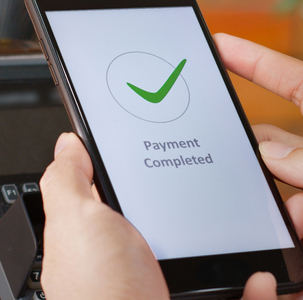Key Takeaways
- Debt collection involves collecting payments from customers for the goods or services they received from a business.
- Continuous assessment of collections process’ maturity is essential to understand the efficiency of collections management process.
- Adopting advanced technologies, such as AI/ML, can help collectors be more efficient, improve customer relations, and ultimately increase collections.

Introduction
Navigating the complexities of debt recovery is a daunting task for many finance professionals and collections teams. From tracking digital transactions across multiple payment channels to assessing customer creditworthiness, the challenges are many.
Debt collection, simply put, is the process of ensuring you receive the payments owed to you. It begins with an order, and ideally, it should end with the collection of payment. However, it’s not always that straightforward. Many factors can be a bottleneck in this process, making it essential to have effective debt collection methods at your disposal.
These techniques aren’t just about chasing after unpaid bills; they encompass strategies to prevent issues in the first place and methods to recover debts when things go wrong. Before we delve into the solutions, let’s take a closer look at the major problems that collections teams run into, so you can see what’s standing in the way of financial success.
Major Challenges Faced by the Collections Teams
When engaging in debt collection, many collectors face challenges like handling a large volume of delinquent accounts and having limited time to address all accounts in their worklist. The following issues represent fundamental flaws in the ideal collections process:

- Inconsistent and outdated data: Data plays a crucial role in the collections process, but incomplete or inaccurate information can lead to significant issues. Collectors might expend effort on attempting to collect payments that have already been settled or improperly allocated, resulting in redundant actions, strained customer relationships, and an elevated DSO.
- Inadequate correspondence: While collections correspondence is crucial, it is equally important to focus on the groundwork of customer collaboration. Collectors may focus on non-critical customers who would have paid regardless, rather than prioritizing those who require more attention.
- Improper customer prioritization: Collectors often rely on static parameters such as due dates, invoice values, and customer segments to prioritize accounts. However, these factors may not be sufficient to deal with dynamic changes in the financial health of the company.
It’s crucial for finance leaders to keep checking how well their collections process is working. This helps them know where they are in terms of managing collections and making sure it’s working smoothly. Now, let’s explore the top debt collection strategies that can help reduce bad debts.
7 Effective Debt Collection Tips to Reduce Bad Debts
These debt collection strategies techniques are designed to significantly reduce bad debts. By employing these tips, you not only enhance your chances of getting paid promptly but also maintain positive customer relationships, ensuring a win-win situation for both parties involved.

1. Robust credit assessment
It’s crucial to start with a robust credit check and onboarding process. This means thoroughly assessing a customer’s creditworthiness before offering credit for goods or services. Establishing an easy-to-use application process within your accounts receivables software ensures you gather comprehensive information.
2. Clear payment terms and policies
Keep your payment terms straightforward and easy to understand. Ensure that your customers have a crystal-clear understanding of your expectations and payment timelines. By communicating these clearly, you not only prevent misunderstandings but also establish a solid foundation for a smoother collections process. Be transparent about late fees and penalties to encourage timely payments.
3. Flexible payment plans
In challenging financial situations, offer flexible payment plans. Understand that some customers may be facing temporary hardships. Being flexible with payment terms and allowing them to make partial payments can demonstrate your willingness to work with them while increasing the likelihood of debt recovery. Remember, maintaining customer loyalty and retaining a customer is more valuable than a single transaction.
4. Diverse payment options
Many companies underestimate the power of providing diverse payment options. Customers often delay payments when the process is overly complicated. Make things simple and convenient for your customers by providing invoices that they can easily pay, or by offering a self-service portal with a range of secure payment options.
Your customers can pay using credit cards, ACH transfers, wire transfers, or digital wallets like PayPal. This flexibility not only speeds up payments but also enhances the customer experience, ensuring their satisfaction.
5. Prioritizing aging accounts
Another effective debt recovery strategy involves careful planning. Before making collection calls, it’s essential to prioritize the customers who need attention the most. This means knowing the age of the accounts and the amounts owed, which is often overlooked. Blindly reaching out to all customers, even those who pay regularly, can cause unnecessary friction.
Leveraging AI-based Collections Software streamlines this process, allowing collection analysts to maximize efficiency by prioritizing calls. AI-driven tools segment high-risk customers, predict payment timelines, and customize dunning strategies for a more targeted approach.
6. Personalized reminder messages
Standardized reminders often get lost in the clutter of emails. Personalize your reminder messages and follow-up emails. Tailor your communication to each customer’s situation. Show them that you recognize their unique circumstances and are committed to working together to resolve payment issues. A personal touch can go a long way in nurturing goodwill.
7. Incentivize early payments
Consider offering incentives for early payments or timely settlements. Discounts, rewards, or extended credit terms can be attractive motivators for customers to settle their debts faster. By providing these incentives, you not only encourage prompt payments but also reinforce a positive relationship with your customers.
Conclusion
Collections teams often struggle with the sheer volume of tasks involved in chasing overdue payments. Manual processes are not only time-consuming but also prone to errors. When you’re dealing with multiple customers, keeping track of who owes what, when payments are due, and which accounts need attention can turn into quite a complicated task.
Automation tools bring a level of precision and efficiency that manual methods simply can’t match. They ensure timely customer reminders, reduce missed deadlines, and provide real-time payment tracking for swift issue resolution, offering accurate reports for data-driven decision-making. Plus, automation streamlines workflows, reducing the risk of costly errors, and ensures a systematic and organized approach to bad debt collection.
As transaction volumes increase and the need for faster responses grows, automation is increasingly becoming the standard, enabling collections teams to operate more intelligently and efficiently in managing how to collect debt. At HighRadius, we bring you the future of collections through our AI-based collections software. Our solution offers advanced worklist prioritization, streamlined workflows, and automated reminders—all working together to accelerate recovery and reduce DSO (Days Sales Outstanding).
We redefine efficiency, freeing up your valuable time so you can focus on your top priorities. By integrating seamlessly with ERP systems, credit agencies, payment partners, and more, we simplify data workflows and eliminate manual data entry, making collections smoother than ever before. Embrace innovation and take control of your financial future with HighRadius. Book a demo with us today to experience the impact of AI-driven collections firsthand.
FAQs
1). What is the 7 7 7 rule for debt collection?
The 7-7-7 rule for debt collection recommends reaching out to debtors within 7 days of the debt becoming due, making 7 contact attempts over the course of 7 weeks, and aiming to resolve the debt within 7 months. But ensure that your collection efforts align with the specific legal requirements.
2). How can collection strategies be improved?
Improving collection strategies involves embracing automation to streamline processes, and segmenting customers for tailored approaches. Clear communication, flexible payment options, and strict adherence to legal compliance are also essential components of enhancing debt collection practices.
3). What are some successful debt collection techniques?
Successful debt collection techniques include proactive communication, setting clear payment terms, offering flexible payment options, prioritizing overdue accounts, and leveraging automation for timely reminders. It’s essential to adhere to ethical and legal guidelines throughout the process.
Introduction
Navigating the complexities of debt recovery is a daunting task for many finance professionals and collections teams. From tracking digital transactions across multiple payment channels to assessing customer creditworthiness, the challenges are many.
Debt collection, simply put, is the process of ensuring you receive the payments owed to you. It begins with an order, and ideally, it should end with the collection of payment. However, it’s not always that straightforward. Many factors can be a bottleneck in this process, making it essential to have effective debt collection methods at your disposal.
These techniques aren’t just about chasing after unpaid bills; they encompass strategies to prevent issues in the first place and methods to recover debts when things go wrong. Before we delve into the solutions, let’s take a closer look at the major problems that collections teams run into, so you can see what’s standing in the way of financial success.
Major Challenges Faced by the Collections Teams
When engaging in debt collection, many collectors face challenges like handling a large volume of delinquent accounts and having limited time to address all accounts in their worklist. The following issues represent fundamental flaws in the ideal collections process:

- Inconsistent and outdated data: Data plays a crucial role in the collections process, but incomplete or inaccurate information can lead to significant issues. Collectors might expend effort on attempting to collect payments that have already been settled or improperly allocated, resulting in redundant actions, strained customer relationships, and an elevated DSO.
- Inadequate correspondence: While collections correspondence is crucial, it is equally important to focus on the groundwork of customer collaboration. Collectors may focus on non-critical customers who would have paid regardless, rather than prioritizing those who require more attention.
- Improper customer prioritization: Collectors often rely on static parameters such as due dates, invoice values, and customer segments to prioritize accounts. However, these factors may not be sufficient to deal with dynamic changes in the financial health of the company.
It’s crucial for finance leaders to keep checking how well their collections process is working. This helps them know where they are in terms of managing collections and making sure it’s working smoothly. Now, let’s explore the top debt collection strategies that can help reduce bad debts.
7 Effective Debt Collection Tips to Reduce Bad Debts
These debt collection strategies techniques are designed to significantly reduce bad debts. By employing these tips, you not only enhance your chances of getting paid promptly but also maintain positive customer relationships, ensuring a win-win situation for both parties involved.

1. Robust credit assessment
It’s crucial to start with a robust credit check and onboarding process. This means thoroughly assessing a customer’s creditworthiness before offering credit for goods or services. Establishing an easy-to-use application process within your accounts receivables software ensures you gather comprehensive information.
2. Clear payment terms and policies
Keep your payment terms straightforward and easy to understand. Ensure that your customers have a crystal-clear understanding of your expectations and payment timelines. By communicating these clearly, you not only prevent misunderstandings but also establish a solid foundation for a smoother collections process. Be transparent about late fees and penalties to encourage timely payments.
3. Flexible payment plans
In challenging financial situations, offer flexible payment plans. Understand that some customers may be facing temporary hardships. Being flexible with payment terms and allowing them to make partial payments can demonstrate your willingness to work with them while increasing the likelihood of debt recovery. Remember, maintaining customer loyalty and retaining a customer is more valuable than a single transaction.
4. Diverse payment options
Many companies underestimate the power of providing diverse payment options. Customers often delay payments when the process is overly complicated. Make things simple and convenient for your customers by providing invoices that they can easily pay, or by offering a self-service portal with a range of secure payment options.
Your customers can pay using credit cards, ACH transfers, wire transfers, or digital wallets like PayPal. This flexibility not only speeds up payments but also enhances the customer experience, ensuring their satisfaction.
5. Prioritizing aging accounts
Another effective debt recovery strategy involves careful planning. Before making collection calls, it’s essential to prioritize the customers who need attention the most. This means knowing the age of the accounts and the amounts owed, which is often overlooked. Blindly reaching out to all customers, even those who pay regularly, can cause unnecessary friction.
Leveraging AI-based Collections Software streamlines this process, allowing collection analysts to maximize efficiency by prioritizing calls. AI-driven tools segment high-risk customers, predict payment timelines, and customize dunning strategies for a more targeted approach.
6. Personalized reminder messages
Standardized reminders often get lost in the clutter of emails. Personalize your reminder messages and follow-up emails. Tailor your communication to each customer’s situation. Show them that you recognize their unique circumstances and are committed to working together to resolve payment issues. A personal touch can go a long way in nurturing goodwill.
7. Incentivize early payments
Consider offering incentives for early payments or timely settlements. Discounts, rewards, or extended credit terms can be attractive motivators for customers to settle their debts faster. By providing these incentives, you not only encourage prompt payments but also reinforce a positive relationship with your customers.
Conclusion
Collections teams often struggle with the sheer volume of tasks involved in chasing overdue payments. Manual processes are not only time-consuming but also prone to errors. When you’re dealing with multiple customers, keeping track of who owes what, when payments are due, and which accounts need attention can turn into quite a complicated task.
Automation tools bring a level of precision and efficiency that manual methods simply can’t match. They ensure timely customer reminders, reduce missed deadlines, and provide real-time payment tracking for swift issue resolution, offering accurate reports for data-driven decision-making. Plus, automation streamlines workflows, reducing the risk of costly errors, and ensures a systematic and organized approach to bad debt collection.
As transaction volumes increase and the need for faster responses grows, automation is increasingly becoming the standard, enabling collections teams to operate more intelligently and efficiently in managing how to collect debt. At HighRadius, we bring you the future of collections through our AI-based collections software. Our solution offers advanced worklist prioritization, streamlined workflows, and automated reminders—all working together to accelerate recovery and reduce DSO (Days Sales Outstanding).
We redefine efficiency, freeing up your valuable time so you can focus on your top priorities. By integrating seamlessly with ERP systems, credit agencies, payment partners, and more, we simplify data workflows and eliminate manual data entry, making collections smoother than ever before. Embrace innovation and take control of your financial future with HighRadius. Book a demo with us today to experience the impact of AI-driven collections firsthand.
FAQs
1). What is the 7 7 7 rule for debt collection?
The 7-7-7 rule for debt collection recommends reaching out to debtors within 7 days of the debt becoming due, making 7 contact attempts over the course of 7 weeks, and aiming to resolve the debt within 7 months. But ensure that your collection efforts align with the specific legal requirements.
2). How can collection strategies be improved?
Improving collection strategies involves embracing automation to streamline processes, and segmenting customers for tailored approaches. Clear communication, flexible payment options, and strict adherence to legal compliance are also essential components of enhancing debt collection practices.
3). What are some successful debt collection techniques?
Successful debt collection techniques include proactive communication, setting clear payment terms, offering flexible payment options, prioritizing overdue accounts, and leveraging automation for timely reminders. It’s essential to adhere to ethical and legal guidelines throughout the process.












